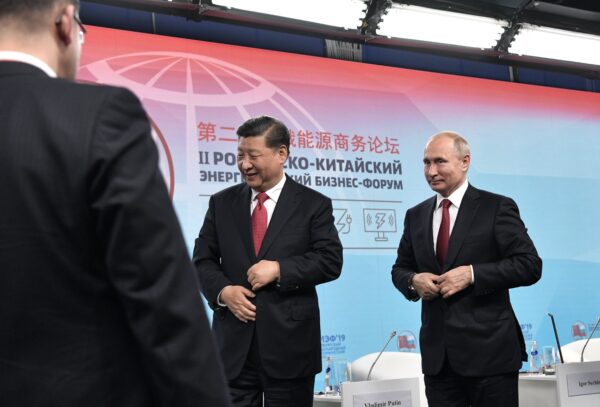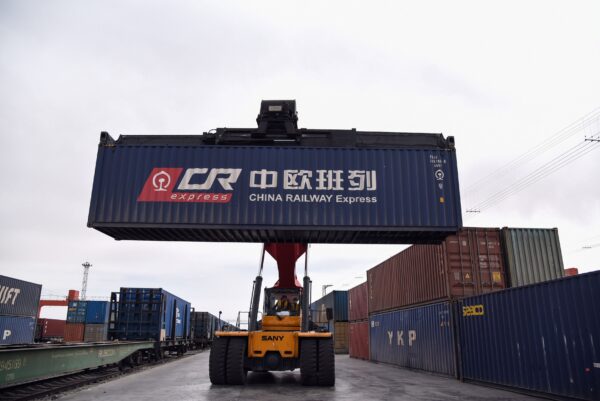China hosted a Central Asia Summit in its historic metropolis of Xi’an on Might 18 and 19, sooner or later earlier than this 12 months’s Group of Seven (G-7) Summit in Japan’s Hiroshima from Might 19 to 21.
The Chinese language chief Xi Jinping met with heads of state from Kazakhstan, Kyrgyzstan, Tajikistan, Turkmenistan, and Uzbekistan in one-on-one conferences, touting “long-lasting friendship” with these former Soviet Union republics.
Xi’an, initially often called Xianyang and Chang’an, was the capital of a number of highly effective Chinese language dynasties, together with the Qin, Han, and Tang. It was the place to begin of the traditional Silk Highway throughout the Han Dynasty.
China analysts consider that Xi deliberately picked Xi’an to carry the Central Asia Summit as an open problem to the G-7 summit and as a platform to indicate his management in a global physique.
Central Asia, also referred to as Center Asia, consists of the 5 former Soviet republics and covers an unlimited area of Asia that stretches from China’s japanese borders to the Caspian Sea within the west, Afghanistan within the south, and Russia within the north.
A strategic passage for Beijing, Central Asia was once considered the yard of Russia. Chinese language freight trains run between China and Europe and crisscross Central Asia. In accordance with state-media Xinhua Information Company, over 1,100 China-Europe freight trains had been dispatched from Xi’an within the first quarter of this 12 months.
Beijing is making an attempt to strengthen its ties with these 5 international locations as Russia’s affect is waned by its conflict efforts in Ukraine. Central Asian international locations, alternatively, are China as their new financial and commerce supply, analysts say.
Nevertheless, the summit, which is proscribed to Central Asian international locations, reveals Xi’s failure in difficult the West, stated China affairs commentator Tang Jingyuan on Might 20.
“Xi Jinping has suffered a major setback in his regional enlargement efforts in East Asia and Southeast Asia. A notable occasion was when international locations similar to Japan, South Korea, the Philippines, and others clearly aligned themselves with the US, successfully forming a blockade towards China alongside the primary island chain,” Tang stated in his YouTube program.
“Because of this, Xi can solely instinctively strengthen his rear space, which is Central Asia.”
‘Utilizing Every Different for Their Personal Ends’
China has been increasing its affect in central Asia by means of financial, technological, and cultural cooperation, below the nostril of Russia even when Russia had a predominant affect on these international locations earlier than the Ukraine conflict.
“China and Central Asia are solely utilizing one another for their very own ends, similar to commerce relations,” stated China affairs commentator Li Linyi in an interview with the Chinese language language version of The Epoch Occasions on Might 17.
In accordance with Chinese language Communist Social gathering (CCP) mouthpiece Folks’s Day by day, China’s complete commerce with the 5 Central Asian international locations reached a report $70 billion final 12 months. The commerce within the first 4 months of 2023 was $24.7 billion, representing a rise of 37.3 p.c 12 months on 12 months.

China has additionally invested billions of {dollars} in creating pure gasoline assets in Central Asia.
By the tip of March, China’s cumulative direct funding within the 5 Central Asian international locations exceeded $15 billion. One of many funding tasks is the Central Asia–China gasoline pipeline, a pure gasoline pipeline system from Central Asia to China’s western Xinjiang area connecting pure gasoline from Turkmenistan, Uzbekistan, and Kazakhstan to China’s home grid. There are three parallel strains in operation, with a designed annual throughput of 60 billion cubic meters, in keeping with Xinhua.
One other China commentator Cai Shenkun famous that central Asian international locations depend on China for funding {dollars} and search entry to China’s market.
“These [Central Asian] international locations are all China’s shut neighbors, and when China’s vitality procurement capability and funding efforts tilt in the direction of these international locations, they may considerably profit,” Cai advised the Chinese language language version of The Epoch Occasions in an interview on Might 17.
Nevertheless, the CCP’s investments within the area are inflicting widespread criticism domestically, as Chinese language residents really feel ignored by the central authorities. On Might 19, Xi reportedly introduced offering a complete of 26 billion yuan ($3.8 billion) in financing assist and grants to Central Asian international locations amid China’s personal financial downturn, excessive unemployment price, growing old inhabitants disaster.
Among the many 5 Central Asian international locations, Kazakhstan holds a dominant place when it comes to its financial system, accounting for 60 p.c of the entire GDP of the 5 international locations. Xi Jinping first proposed the Belt and Highway Initiative in Kazakhstan in September 2013. President of Kazakhstan Kassym-Joomart Tokayev arrived in Xi’an on Might 17, sooner or later forward of the heads of the opposite states.
Not Akin to G-7 Summit: Analyst
Regardless of China’s efforts to strengthen its ties with Central Asia, Cai believes that the China-Central Asian Summit is incapable of difficult the standing of the G-7 Summit. When it comes to political affect and financial energy, the Central Asian international locations will not be on the identical stage.

Feng Chongyi, affiliate professor of China research on the College of Know-how Sydney, agreed with Cai.
“The CCP’s alliance merely can’t evaluate with the Western democratic alliance,” he stated.
Amid China’s rising aggression, Europe and the US “are altering their China insurance policies of the earlier a long time,” Cai advised The Epoch Occasions.
The G-7 leaders mentioned the menace posed by China’s ruling CCP on the summit. The G-7 Hiroshima Leaders’ Communiqué launched on Might 20 outlined up 9 factors to be able to tackle the dangers posed by the CCP. It voiced the considerations among the many world’s superior democracies on the CCP’s human rights report, the CCP’s army actions within the South China Sea, the soundness of Taiwan, and the CCP’s coercion within the East and South China Seas.
Cheng Jing and Luo Ya contributed to this report.







